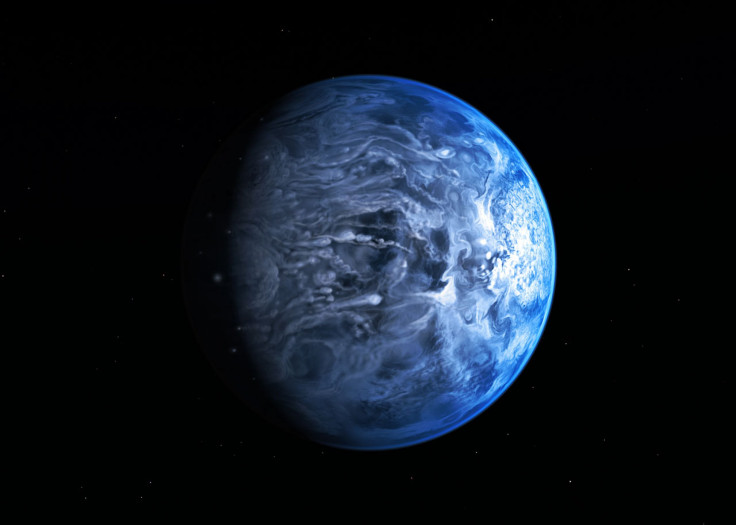NASA’s Chandra Captures X-Ray Observations Of Eclipsing Exoplanet [PHOTO]
NASA’s Chandra X-Ray Observatory has captured an exoplanet eclipsing its host star. The X-ray observations were the first ever of an eclipsing exoplanet and could provide new insights to exoplanets and their orbits.

The eclipsing exoplanet, HD 189733b, was found in the system HD 189733, reports NASA, and is a mere 63 light-years from Earth. HD 189733b is a gas giant that orbits incredibly close to its parent star. Due to their size and composition, researchers have named these types of planets hot Jupiters. HD 189733b orbits its star once every 2.2 days, notes NASA, and is 30 times closer to its star than Earth is to the sun. NASA’s Chandra was able to perform X-ray observations of six transits of the planet around its star, and the European Space Agency’s XMM Newton Observatory was able to conduct X-ray observations of one transit of the planet around its star, giving researchers a new set of X-ray data on exoplanets.
Previous observations of exoplanets have been obtained via optical light, notes lead author Katja Poppenhaeger of the Harvard-Smithsonian Center for Astrophysics. “Finally being able to study one in X-rays is important because it reveals new information about the properties of an exoplanet,” said Poppenhaeger. Researchers have previously used NASA’s Kepler telescope and the Hubble Space Telescope to observe HD 189733b, notes NASA.
Earlier this month, Hubble was able to observe HD 189733b’s true color, presenting to the world a new blue planet similar in appearance to Earth but totally different in terms of physical properties. Temperatures typically exceed 1,000 degrees Celsius (1,832 degrees Fahrenheit) and among its bizarre meteorological phenomena are storms of raining glass.

For researchers, the X-ray observations will lead to new insight on the planet’s atmosphere. According to Jurgen Schmitt, from the Hamburger Sternwarte in Germany, HD 189733b’s atmosphere may have outer layers that are invisible to optical light, meaning Kepler or Hubble would be unable to observe these layers. Schmitt said, “The X-ray data suggest there are extended layers of the planet's atmosphere that are transparent to optical light but opaque to X-rays.”
Researchers have to act fast to observe the planet’s atmosphere as it is being evaporated by X-ray radiation emitted by its parent star, reports NASA, estimating a loss of 100 million to 600 million kilograms of mass per second.
Chandra’s X-ray observations have led to the discovery of a small red companion star orbiting around HD 189733. The red star and its larger companion were probably formed at the same time, three to 3 1/2 billion years ago, but HD 189733 is acting like a much younger star. Poppenhaeger suspects HD 189733b may be the reason the parent star is rotating faster, which increases the level of magnetic activity, than its smaller companion.
© Copyright IBTimes 2024. All rights reserved.








